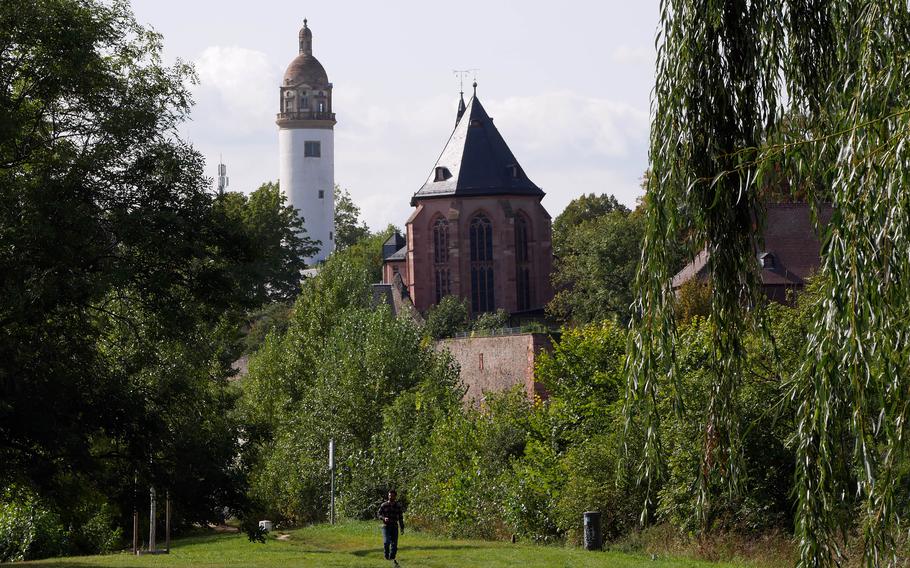
A view of St. Justin's Church and the tower of the Hoechst Palace from a path that runs along the Main River. Hoechst is a borough of Frankfurt located a couple of miles downstream from the city center. (Michael Abrams/Stars and Stripes)
The Frankfurt borough of Hoechst, with its giant chemical industrial park, doesn’t generally strike people as an excursion destination.
But it has charming surprises in store for those who give it a chance: a couple of palaces, an old town center full of half-timbered houses, one of Frankfurt’s oldest churches and the city’s only ferry across the Main River.
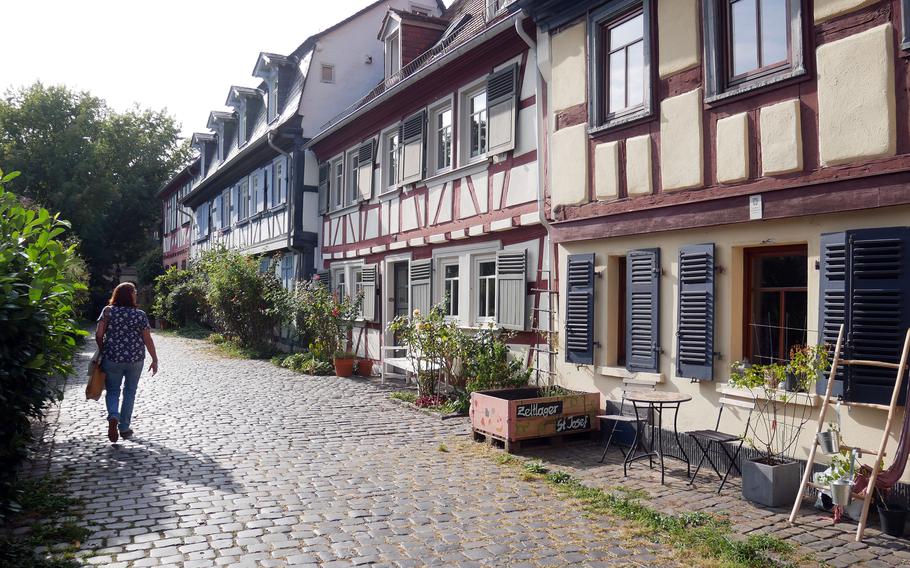
A visitor to Hoechst walks down Burggraben, a cobblestone lane across from Hoechst Palace that is lined with half-timbered houses. (Michael Abrams/Stars and Stripes)
My wife and I headed there on a recent sunny Saturday, which is one of the three days of the week the Hoechst market is in operation. That’s where we headed first, strolling through the array of vendor stands.
There has been a market in Hoechst since 1355, and today’s market square was laid out in the 1920s. While many towns have weekly markets, not many have their own market hall.
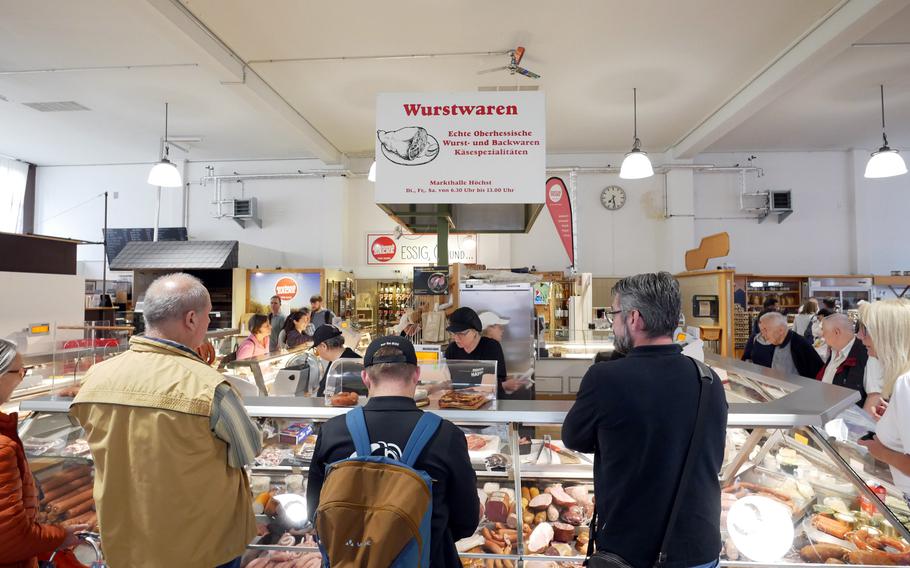
People shop in the Hoechst market hall in Frankfurt. It is open Tuesday, Friday and Saturday, like the outdoor farmers market that takes place in front of it. Market days are a good time to visit Hoechst. (Michael Abrams/Stars and Stripes)
Hoechst’s isn’t that big, but it is busy inside, especially at the stands selling coffee and drinks on a Saturday morning. We had freshly pressed apple juice and then went out to see the Altstadt, the old town district.
Hoechst is full of narrow cobblestone lanes. We walked along a couple of these before coming to the highlight of old Hoechst, the schloss, with its cobblestone square, Schlossplatz.
The schloss, or palace, started out as a castle toll station on the Main for the archbishops and electors of Mainz. Frankfurters upset with paying the tolls destroyed it in 1396.
Soon rebuilt, it was turned into a residential palace by an archbishop at the end of the 16th century but suffered damage in the Thirty Years War. Following World War II, the palace served as AFN’s Europe headquarters until 1966.
There’s a wonderful view of the Main from the palace gardens, and visitors can walk through part of the former moat. We had lunch at a restaurant on the palace square, then walked down to the Main through two gates of the medieval fortifications, the Zollturm and Maintor.
We strolled to the pedestrian and bike ferry that connects Hoechst with Schwannheimer Dune, a popular nature preserve, then wandered down to where the Nidda, a small river, flows into the Main. The triangle between the rivers is a popular rest and recreation area.
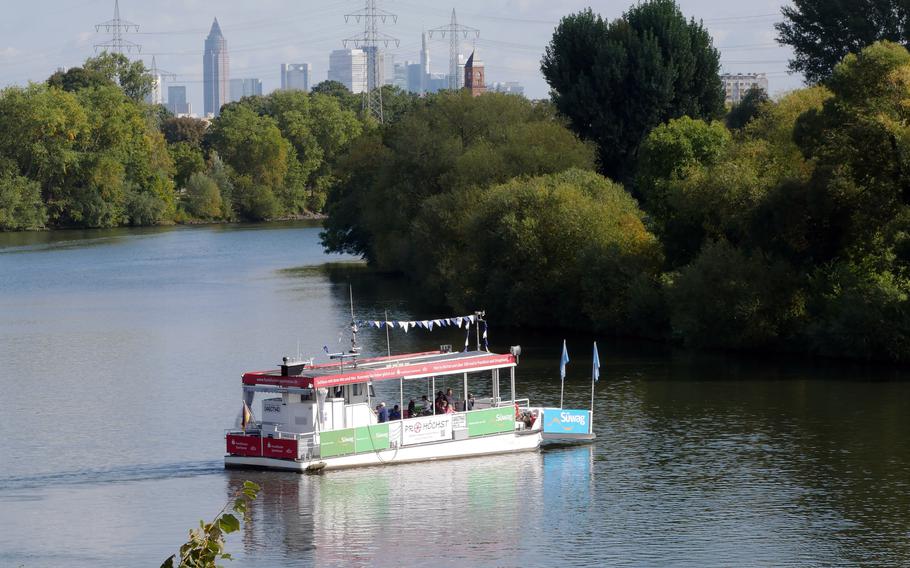
A pedestrian and bicycle ferry crosses the Main River at Hoechst, a borough of Frankfurt downstream from the city’s skyscrapers. (Michael Abrams/Stars and Stripes)
We watched the ships and the ducks ply the Main for a bit, then headed back into town past the Bolongaropalast, a Baroque palace built for a pair of snuff manufacturers in the 18th century. Unfortunately, the palace is closed for renovations.
Before Hoechst was known for chemicals, it was known for its porcelain manufacturing. We visited the Porzellanmuseum, with its historical exhibit, before heading down to St. Justin’s Church.
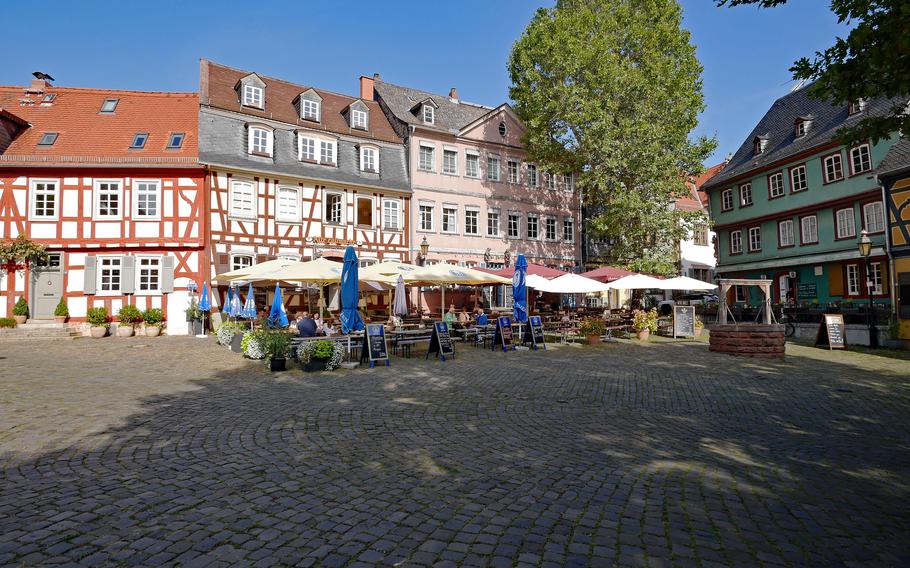
The cobblestone Schlossplatz at the foot of the Hoechst Palace is lined with old half-timbered houses containing popular restaurants. (Michael Abrams/Stars and Stripes)
Before going inside, we walked around back and strolled through the church’s small flower and herb garden.
St. Justin’s is one of the oldest churches in the area, having been consecrated in 850. Many additions were made over the years, including the Gothic choir. The Baroque high altar and the organ are from the 18th century.
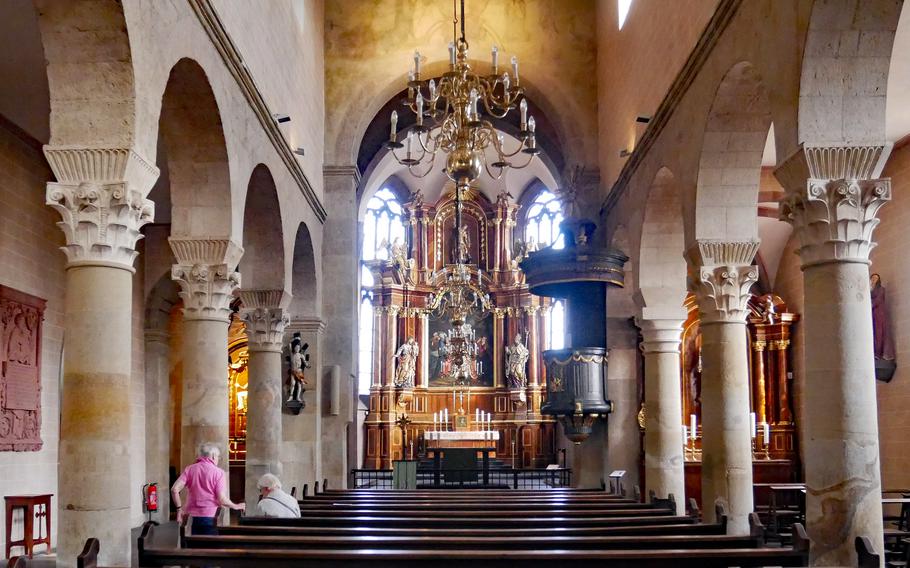
St. Justin's Church in the Hoechst section of Frankfurt dates back to the ninth century. The high altar and the organ are from the 18th century. (Michael Abrams/Stars and Stripes)
As we walked back toward Schlossplatz, past the Renaissance old City Hall with its stepped gable roof, I wondered why it took so long for us to discover this little gem.
abrams.mike@stripes.com @stripes_photog
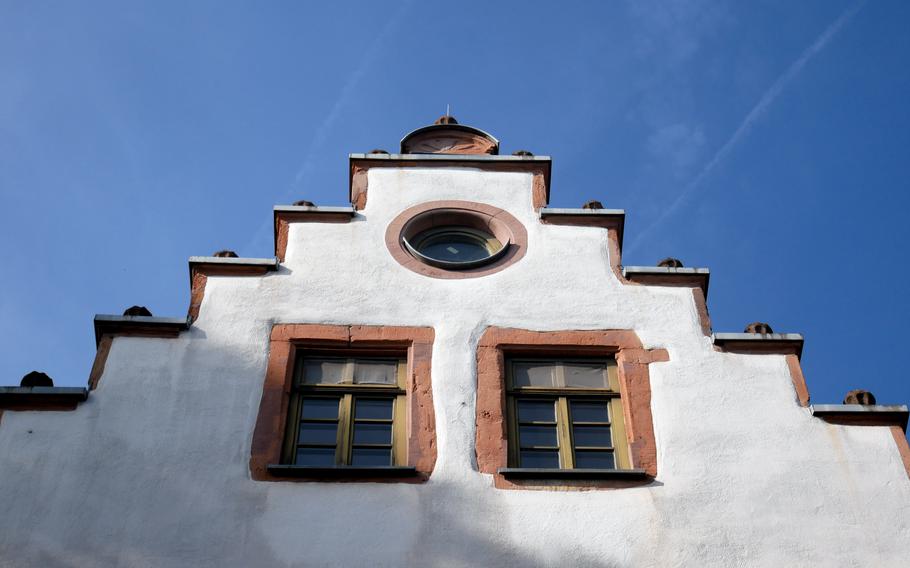
The stepped gable of Hoechst’s old City Hall. Before being incorporated into Frankfurt in 1928, Hoechst was a municipality in its own right. (Michael Abrams/Stars and Stripes)
On the QT
Location: About 16 miles east of Wiesbaden
Times: The market is open from 7 a.m. to 1 p.m. on Tuesday, Friday and Saturday; the Porzellanmuseum is open 11 a.m. to 6 p.m., Saturday and Sunday.
Cost: There is some free parking on the banks of the Main near the old town (Altstadt); parking garages cost about 2.50 euros per hour. Admission at the Porzellanmuseum is 4 euros for adults, free for those under 18 years of age. Information: Online: frankfurt.de; frankfurt-tourismus.de/en